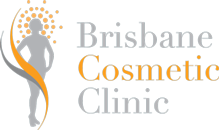General Risks and Complications of Cosmetic Surgery
All invasive surgery has associated risks and complications and it is important for patients to understand the risks involved and what you can do to minimize or prevent them. The choice to undergo a surgical procedure should be based on the comparison of the risk to the potential benefit. And although the majority of patients do not experience the following complications, patients should discuss each of them with their doctor to make sure they understand all possible consequences of planned surgery.
On the occasion that risks and complications arise, every effort is made to resolve these problems as quickly as possible. Complications can prolong the recovery period, but they uncommonly have a permanent effect on the final result.
During your consultation, you can ask questions regarding potential risks and complications and learn how Dr. Konrat and her team plan to manage these.
Prior to Surgery
Prior to your procedure, you will receive detailed information regarding your surgery, what to expect as well as pre and post-operative care instructions. It is important to adhere to Dr Konrat’s post-operative care protocol to achieve the best possible recovery and surgical outcome.
With all surgical procedures, it is important for patients to have realistic expectations about surgical results, based on how your body looked before surgery.
Surgery and Post-Operative Scars
Every patient recovers and heals differently after surgery, and your genetics and lifestyle as well as the precautions you take after surgery all contribute to your recovery. These factors combined will have the most significant impact on how your surgical scars will appear.
Following your surgery, we encourage patients to remember:
- All surgery leaves scars
- Scars present differently from patient to patient and it is normal for a scar to initially appear post-operatively
- Surgical scars can take 12-18 months to mature, however, with time the scar will lighten and soften in colour and become less noticeable
- In the early stages of healing, it is normal for a scar to feel firm to the touch and appear darker in colour (purple/red), and even feel uneven and in parts lumpy. This most commonly will be more noticeable at the ends of the scar
- Some patients may be more prone to scarring. During the healing process, if your scars begin to show more prominently or show signs of abnormal healing (keloid or hypertrophic scarring) silicone-based dressings may be recommended upon consultation with Dr Konrat and our Clinic registered nurse.
We encourage all patients to contact our team at any time during their recovery period if they have any questions or concerns with their post-surgery healing.
Risks Common to all Surgery
Below is a list of potential surgery risks and complications which MAY occur but is NOT limited to:
- Bleeding and haematoma (bleeding into the tissues). This rarely requires a return to the operating theatre or a blood transfusion. Aspirin, as well as other non-steroidal anti-inflammatory agents taken up to two weeks prior to surgery, even as a single small dose can increase the risk of bleeding. Patients on anti-coagulants need specific peri-operative management.
- Wound separation or delayed healing
- Inflammation and infection
- Pain. The severity and duration of post-operative pain varies with each individual patient.
- When a procedure is performed on both sides of the body, the amount of swelling and pain are rarely the exact same. More pain and/or swelling on one side does not necessarily mean that a complication has occurred, although this should be reported to the doctor.
- Sore throat caused by the tube used to administer anaesthesia.
- Painful or infected intravenous line site Nausea and vomiting. Modern anaesthetic agents and post-operative medications usually but not always control vomiting.
- Other anaesthetic complications. Any specific concerns should be discussed with the anaesthetist.
- Sensitivity or allergy to dressings and tape.
- Thick, wide, depressed or discoloured scars (keloid scars).
- Unsatisfactory result and need for revisional surgery.
- Asymmetry
- Post-operative fatigue and depression. Physical recovery from the operation and the anaesthetic is gradual. Many patients may feel “emotionally low” post-operatively. This tends to improve over a number of weeks.
Rarer Complications
- Deep venous thrombosis (DVT) can lead to pulmonary embolism (PE). (Blood clots forming in the veins of the legs and floating to and blocking the blood vessels supplying the lungs).
- The oral contraceptive pill and hormone replacement therapy (HRT) can increase the risk of a DVT and should be stopped at least a month before surgery. Special precautions such as the use of anti-embolic stockings and heparin (anticoagulant) injections appear to significantly lower the risk of DVT and PE
- Pneumothorax, particularly in very thin patients. This rarely needs to be treated with a large drain tube (chest tube) to reinflate the lung post-operatively.
- Severe allergic reactions to drugs used in anaesthesia are also rare. (1 in 10,000)
- Other rare complications of surgery include stroke, heart attacks, cardiac arrhythmias, etc. however these are extremely rare in otherwise healthy patients.

